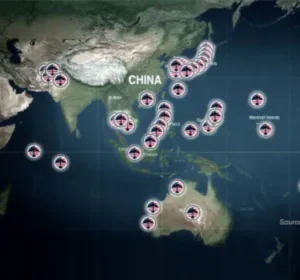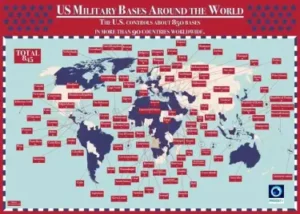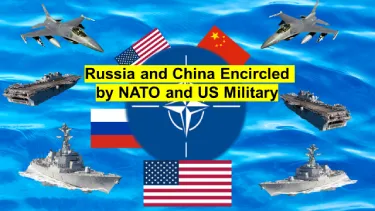Description:
Are Russia and China global threats or defending against US and NATO aggression. Discover Australia’s role and implications for its policies.
Introduction
In today’s complex geopolitical landscape, two key questions arise: Are Russia and China genuine threats to global security, or are they merely protecting themselves from perceived aggression by the US and NATO? Understanding the motivations behind these nations’ actions is crucial for policymakers and the global community. This article explores these dynamics, incorporating John Mearsheimer’s perspectives on nationalism, realism, and liberal hegemony. Additionally, it examines Australia’s role in supporting US-led conflicts and its implications.
The Issue at Hand
I. Historical Context
A. Post-Cold War Era
– The collapse of the Soviet Union marked the end of a bipolar world, leading to the rise of a unipolar world dominated by the United States.
– NATO’s eastward expansion began shortly after, incorporating many former Warsaw Pact countries, which Russia perceived as a direct threat to its security.
B. Rise of China
– Since the 1990s, China has experienced rapid economic growth and significant military modernization.
– Initially, the US engaged China with hopes of integrating it into the global liberal order. However, as China’s power grew, the US shifted its strategy towards containment.
II. Theoretical Framework
A. Offensive Realism (John Mearsheimer)
– Offensive realism posits that great powers are inherently aggressive and seek dominance to ensure their survival.
– Mearsheimer argues that nationalism and realism drive state behaviour more than liberal ideals.
B. Liberal Hegemony
– Liberal hegemony aims to spread liberal democracy, integrate economies, and incorporate countries into international institutions.
– According to Mearsheimer, this strategy has failed, leading to significant geopolitical tensions.
Intensifying the Issue’s Relevance
III. Russia’s Geopolitical Actions
A. NATO Expansion and Russia’s Response
– NATO’s expansion into Eastern Europe and the Baltic states has been perceived by Russia as encroachment on its sphere of influence.
– Russia and China both find themselves increasingly encircled by NATO and US military bases, which they perceive as a significant threat to their national security.
NATO’s eastward expansion has brought military infrastructure closer to Russia’s borders, with bases in Poland, Romania, and the Baltic states.
This expansion is seen by Russia as a direct encroachment on its sphere of influence, leading to heightened tensions and a series of defensive measures from Moscow, including the annexation of Crimea and military interventions in Georgia and Ukraine.
B. Key Conflicts Involving Russia
– Georgian War (2008): Russia intervened to support the breakaway regions of Abkhazia and South Ossetia.
– Ukrainian Crisis (2014): Following the Euromaidan protests and the ousting of Ukraine’s pro-Russian president, Russia annexed Crimea and supported separatist movements in Eastern Ukraine.
– Current Tensions: The ongoing conflict in Ukraine has escalated, with Russia justifying its actions as protecting Russian-speaking populations and preventing NATO expansion.
C. Nationalism and Realism in Russian Policy
– Russia’s foreign policy is heavily influenced by nationalism and a desire to keep its sovereignty and influence in its near abroad.
– Mearsheimer argues that these actions are consistent with realist principles, where great powers act to secure their interests and keep regional dominance.
IV. China’s Geopolitical Actions
A. US-China Relations

– Initially, the US looked to engage China through economic integration and cooperation, hoping this would lead to political liberalization.
– As China’s power grew, the US shifted towards a strategy of containment, exemplified by the “pivot to Asia.”
– The US has set up numerous military bases around China, from Japan and South Korea to the Philippines and Guam, creating a strategic encirclement that China perceives as threatening.

The United States maintains an extensive network of military bases around the world, estimated to be around 800 installations in more than 70 countries.
This global military presence is unparalleled, with significant concentrations in strategic regions such as East Asia, Europe, and the Middle East. In particular, the US has numerous bases surrounding China, including key installations in Japan, South Korea, the Philippines, and Guam.
This network not only serves to project US power but also to reassure allies and deter potential adversaries.
However, from China’s perspective, these bases represent a direct threat to its national security and a strategic encirclement that challenges its regional dominance.
Similarly, China’s geopolitical landscape is heavily influenced by the presence of US military bases in the Asia-Pacific region.
Key installations in Japan, South Korea, the Philippines, and Guam form a strategic perimeter around China, which Beijing views as an attempt to contain its rise.
This network of bases not only projects US power but also serves to reassure regional allies, contributing to China’s perception of encirclement and prompting it to assert its territorial claims more aggressively in areas like the South China Sea.
B. Key Areas of Conflict
– South China Sea: China has built military installations on disputed islands, asserting its claims over vital maritime routes. Despite this, China has not threatened commercial shipping, which continues to pass through these waters without significant incidents.
– Taiwan: Internationally recognized as part of China, Taiwan is still a sensitive issue. China’s military manoeuvres around Taiwan are often responses to perceived provocations, including US arms sales to Taiwan and military presence in the region.
– Trade Wars: Economic competition has led to tariffs and trade restrictions between the US and China, reflecting deeper strategic rivalry.
C. Nationalism and Realism in Chinese Policy
– China’s actions are driven by a desire to secure its sovereignty and regional dominance.
– Mearsheimer’s realism suggests that China’s assertiveness is a natural response to its rising power and the perceived threat from US policies.
Comprehensive Solutions and Insights
V. Case Studies
A. Ukraine Crisis
– The crisis began with the 2014 Euromaidan protests and the later Russian annexation of Crimea.
– NATO and Western countries view Russia’s actions as aggressive expansion, while Russia claims it is protecting ethnic Russians and preventing NATO encroachment.
– Understanding both perspectives is crucial for resolving the conflict and preventing further escalation.
B. South China Sea Disputes
– The South China Sea is a strategic maritime area with overlapping territorial claims from China, Vietnam, the Philippines, and other countries.
– China’s construction of artificial islands and military installations has heightened tensions.
– Despite these activities, China has not disrupted commercial shipping, emphasizing the importance of keeping free navigation in these crucial waters.
– Resolving these disputes requires diplomatic negotiations and respect for international maritime laws.
VI. Australia’s Role in US Foreign Policy
A. Historical Support for US Wars
– Australia has consistently supported US-led conflicts, including in Iraq and Afghanistan.
– Australia’s motivations include strengthening its alliance with the US and contributing to global security efforts.
B. Impact on Australia’s Foreign Relations
– Australia’s involvement in US wars has had mixed consequences, affecting its international standing and relations with neighbouring countries.
– There is ongoing debate within Australia about whether its foreign policy should be more independent or continue aligning closely with US strategies.
Recap and Final Analysis
VII. International Perception and Media Representation
A. Western Media’s Viewpoint
– Western narratives often depict Russia and China as aggressive threats to global security.
– These perspectives emphasize violations of international norms and the destabilizing impact of their actions.
B. Russian and Chinese Media’s Viewpoint
– Russian and Chinese media portray their countries’ actions as defensive measures against US and NATO aggression.
– They emphasize sovereignty, self-determination, and the historical context of Western interventions.
VIII. Expert Opinions
A. John Mearsheimer’s View
– Mearsheimer argues that liberal hegemony has failed and that nationalism and realism drive state behaviour.
– He sees Russia and China’s actions as natural responses to US and NATO policies.
B. Other Scholars and Analysts
– There is a range of opinions on Russia and China’s motivations, with some viewing them as defensive and others as expansionist.
– Consensus varies, but many agree on the importance of understanding both sides to navigate the complex geopolitical landscape.
Balanced Assessment
IX. Conclusion
 – The actions of Russia and China are shaped by a mix of defensive and strategic motivations.
– The actions of Russia and China are shaped by a mix of defensive and strategic motivations.
– While their actions can be perceived as threats, they are also responses to perceived aggression from the US and NATO.
– Understanding these dynamics is crucial for formulating effective and peaceful foreign policies.
X. Call to Action
– Readers are encouraged to delve deeper into international relations to form their own informed opinions.
– Policymakers should consider both defensive and aggressive motivations in their strategies to foster global stability.
Reader Interaction
XI. Question for Readers
– What do you think are the primary motivations behind Russia and China’s actions on the global stage? Are they defending themselves, or are they expansionist?
XII. Call to Action
– Share your thoughts in the comments below and explore more resources on international relations on our website.
XIII. Social Sharing
– If you found this article insightful, share it with your contacts and on social media.
By understanding the perspectives and motivations of Russia and China, we can better navigate the complexities of international relations and work towards a more stable and peaceful global order.

